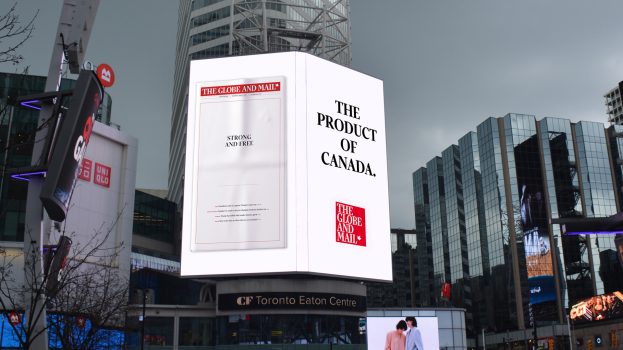Is there really anything else to talk about besides Star Académie when you talk media in Quebec? The French-language reality TV show delivers as much as half of the province’s entire population.
It continues to be almost single-handedly responsible for TVA’s dominance in the Quebec market, and in Quebec City the most recent BBM numbers give the network’s CFCM an almost 40% share – three times the amount of next closest rival SRC (Radio Canada).
‘[TVA] is using Star Académie as its locomotive for ratings – for auto promotion, for multimedia impact using print and radio partnerships, and to generate the revenues on a province-wide basis,’ says Richard Giguère, VP, group account director for Le Groupe TMC (The Media Company). Star Académie returns for what promises to be another top-rated season this fall.
None of this is to say other rivals like TQS, which operates CFAP, are struggling. Like the rest of Canada, the TV market remains vibrant and TQS has a good foothold in Quebec City because of the popularity of its prime-time news hour programming (which in QC begins at 5 p.m., not six).
An increasing amount of inventory is being sold on a network basis, as TVA and SRC in particular move toward a business model very similar to what CanWest Global is doing in Ontario. This is true especially of ‘those shows that have been delivering better audiences,’ says Giguère.
English-language TV is not a factor in largely francophone Quebec City, with none of the three English stations, CKMI, CBMT and CFCF breaking even 1% tuning share.
On the radio front, the biggest news is the entrance of Cogeco with adult contemporary station ‘Rhythme FM,’ which is like the one it currently operates in Montreal. The end result is likely audience fragmentation, as Rhythme splits share with CITF, CJMF and CFOM.
Giguère expects costs to decline, mostly at the retail level as the market takes a sharply competitive turn. Things may be different – or the same, depending on how you want to look at it – at the national level. There, pricing in Montreal has historically determined network prices in the rest of the province, leading to artificially high costs as sellers engage in what Giguère calls ‘forced packaging.’
But again, because of the Cogeco move, and continuing fallout from the recent and only partially successful merger between Astral Radio Quebec and Radiomedia, he expects rates to move in the direction of advertisers.
The competitive situation between daily newspapers Le Soleil and Journal de Québec remains stable with the latter retaining a relatively comfortable circulation lead Monday to Friday, though the gap narrows on the weekend. Advertisers typically buy both papers to maximize reach. Says Giguère, ‘It’s not the cliché of, ‘If you want to reach the upscale guy you go there, and if you want to reach the blue-collar guy you go there.”
That said, Le Soleil has experienced a bit of a slide recently despite being considered the institution in the city and the paper with slightly better concentrations of affluent readers. Journal de Québec is backed by the powerful Quebecor and has managed to stay on top despite Le Soleil’s efforts to make technical improvements in such areas as presses and reproduction. ‘Beyond reproduction and pure quality, the content has been more of a struggle – the mission, the vision and organizing a clear brand,’ says Giguère.
Outdoor in Quebec City has had some jazz injected into it with the introduction by Astral of new products like the column. Astral needs those plus its well-placed superboards to compete against Viacom, which is still the largest player by tonnage. But Giguère cautions against appraising inventory at face value: the physical layout of the city is such that you’re not always getting what you think you’re getting. The unusual naming conventions are an example of this, with a distinction being made between what’s called ‘city and district’ and ‘city and suburbs.’
That’s because much of the plant is not downtown but is rather ‘surroundings driven’ or highway driven. Giguère suggests taking a look in person if you’re able. ‘To do just a pure superboard buy in Quebec City might not be an effective output at the end of the day.’
National advertising continues to drive business on the bigger outdoor faces, though inventory isn’t moving as quickly as in Montreal. And, like other Canadian cities, neighbourhoods can be very stingy with space, putting a further premium, says Giguère, on getting to know the neighbourhoods.



























